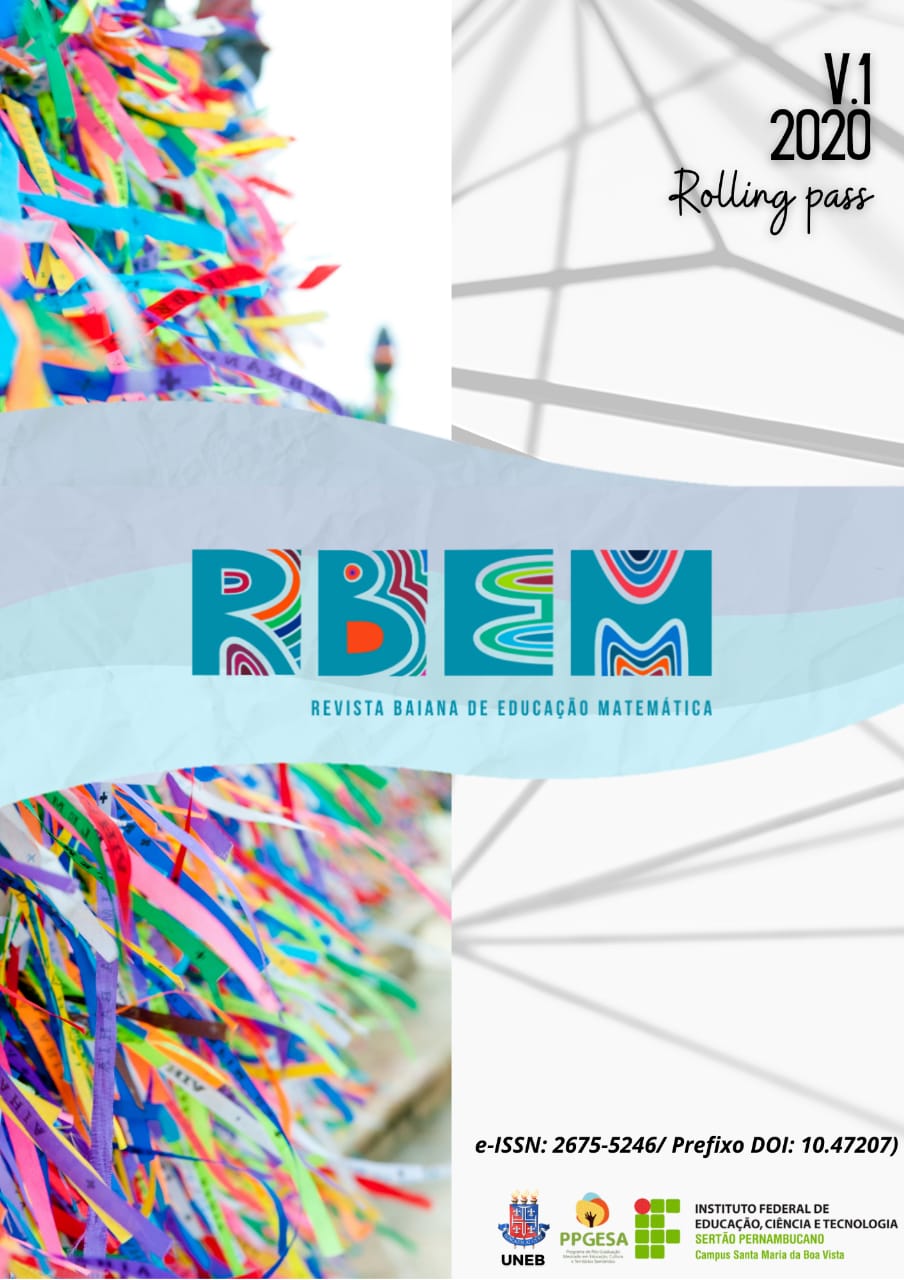Avaliação no Ensino Remoto de Matemática: analisando categorias de respostas
Main Article Content
Abstract
:A head of the pandemic, in 2020, the usual classroom teaching had been suspended and the schools had to adopt a model that took care of to the social isolation and that allowed the continuity of the lessons. Some schools had adopted the RemoteEmergencialTeaching (RET), others had created a similar structure to long-distance education.These adaptations had generated other dilemmas on how it would be to teach and, consequently, how it would be to evaluate in these models of education. This work reports the experience of evaluation with three classes of the 2nd year from the Escola SESC de Ensino Médio (ESEM), which has adopted the RET, based on a situation problem, structuralized in the environment of learning with references to the reality.The used model was a research, which had the objective to promote a bigger reflection and understanding on the importance of the application of the exponential function in the analysis of the behavior of the infection for the virus. The students had to explain the difference between the exponential, linear and quadraticfunctions, from available mathematical information in a text that must be accessed through one link supplied. Moreover, they had to access another material, to understand some concepts related to COVID 19, as the tax of infection, speed of transmission, and as these concepts (or some of them) are related with the studied mathematical model, the Exponential Function. Using these productions, the answers of the 45 pupils in relation to the learning of exponential functions had been categorized and analyzed. This experience indicates that it is possible to extend the evaluation process using the digital technologies.
Downloads
Article Details
Uma nova publicação de artigo anteriormente publicado na Revista Baiana de Educação Matemática, fica sujeita à expressa menção da precedência de sua publicação neste periódico, seguindo as normas de referência. Autores que publicam na RBEM concordam com os seguintes termos:
-
O Conselho Editorial se reserva ao direito de efetuar, nos originais, alterações de ordem normativa, sintática, ortográfica e bibliográfica com vistas a manter o padrão culto da língua, respeitando, porém, o estilo dos autores. As provas finais poderão ou não ser enviadas aos autores.
-
Autores mantém os direitos autorais e concedem à revista o direito de primeira publicação, com o trabalho simultaneamente licenciado sob a Licença Creative Commons Attribution (CC BY-NC-SA).
-
Autores têm autorização para assumir contratos adicionais separadamente, para distribuição não-exclusiva da versão do trabalho publicada nesta revista, exemplo: publicar em repositório institucional ou como capítulo de livro, com reconhecimento de autoria e publicação inicial na RBEM.
-
Autores têm permissão e são estimulados a publicar e distribuir seu trabalho online — em repositórios institucionais, página pessoal, rede social ou demais sites de divulgação científica.
References
AMANTE, L; OLIVEIRA, I. Avaliação das Aprendizagens: Perspetivas, contextos e práticas.In: Amante, L; Oliveira, I. Avaliação das Aprendizagens: Perspetivas, contextos e práticas. Portugal: Universidade Aberta-LE@D, 2016. p 54-74.
ANDRADE, M.; FRANCO, C.; CARVALHO, J. B. P. Gênero e desempenho em matemática ao final do ensino médio: quais as relações?. In: Estudos em Avaliação Educacional, São Paulo, n. 27, jan./jun. 2003.
ARROYO, Miguel G. Currículo, território em disputa. Petrópolis, RJ: Vozes, 2013.
BARDIN, L. Análise de Conteúdo. Edição revista e atualizada. Lisboa: Edições 70, 2009.
BARDIN, L. Análise de Conteúdo. Edição revista e atualizada. Lisboa: Edições 70, 2016.
ESTEVES, Manuela. Análise de Conteúdo. In: LIMA, Jorge Ávila de; PACHECO, José Augusto (Orgs.). Fazer investigação: contributos para a elaboração de dissertações e teses. Porto: Porto Editora, 2006, p. 105-126.
FERNANDES, D. Avaliar para aprender: fundamentos, práticas e políticas. São Paulo: Editora Unesp. 2008.
JÜRGENSEN, Bruno Damien da Costa Paes. CENÁRIOS PARA INVESTIGAÇÃO COMO FERRAMENTA DE AVALIAÇÃO: UMA DISCUSSÃO. Educação Matemática em Revista, Brasília, v. 22, ed. 56, p. 21-38, out/dez 2017.
MÉNDEZ, Juan A. Avaliar para conhecer: examinar para excluir. Porto Alegre: Artmed. 2002.
MENDES, R. M.; MISKULIN, R. G. S. A Análise de Conteúdo como uma metodologia. Cadernos de pesquisa, São Paulo, v. 47, n. 165, p. 1044-1066, jul./set. 2017.
NASSER, L., LIMA, D., NOVÔA VAZ, R., et al."Discussing insubordinate practices in mathematics evaluation", International Journal for Research in Mathematics Education, p. 471–480, 2019.
SERAFIM, R. J., &WALTER, S. A. O que Bardin diz que os autores não mostram? Estudo das produçõescientíficas brasileiras do período de 1997. Administração: ensino e pesquisa 18(2), pp. 241–269. 2017.
SKOVSMOSE, O. Cenários para investigação. Bolema, 14, 66-91. 2000.
VALA, J. A análise de conteúdo. In: SILVA, A. S.; PINTO, J. M. (Orgs.). Metodologia das ciências sociais. 8. ed. Porto: Afrontamento, 1986, p. 101-128.
VAZ, R. F. N..; NASSER, L. Em busca de uma avaliação mais “justa”. Com a Palavra o Professor, Vitória da Conquista (BA), v.4, n.10, setembro-dezembro, 2019.
VILAS BOAS, B. M. Avaliação formativa e formação de professores: ainda um desafio. Linhas Críticas, 2006 v. 12, n. 22, p. 75-90, 11.

